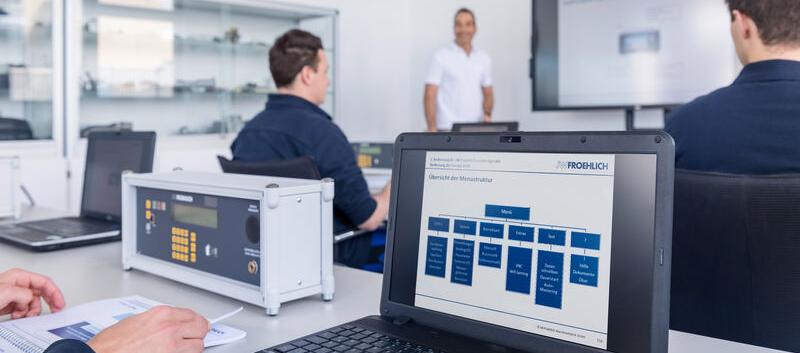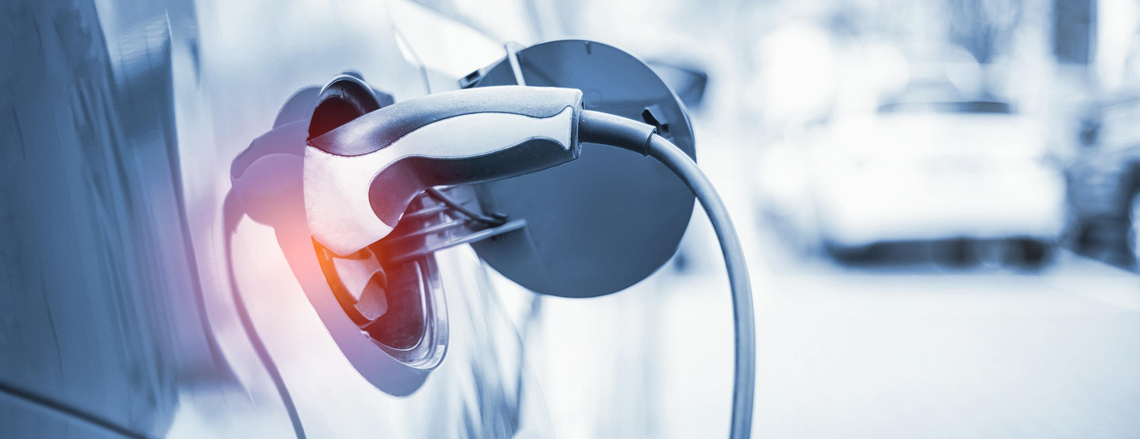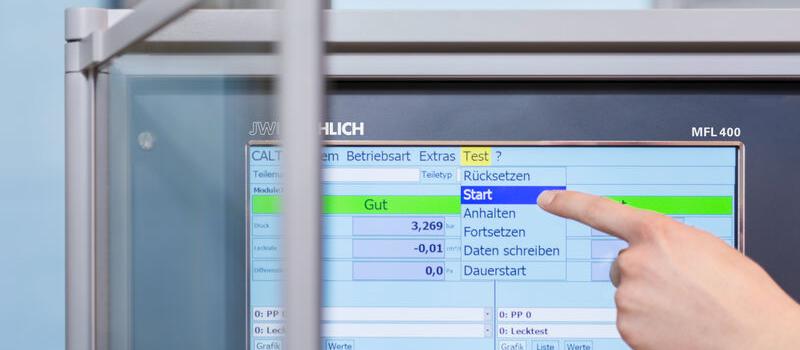Theoretical principles of leak testing - online seminar
Our seminar on the theory of leak testing will take place in March as well as in September 2022. You will learn the most important theoretical principles of leak testing with air and actively discuss practical issues with other participants in small groups. We will use the MS Teams video conferencing platform for the seminar. You will receive the access data after registration timely before the seminar begins.
Dates
30./31.03.2021 - Theory seminar online 1/2022
14./15.09.2022 - Theory seminar online 2/2022
Practical seminar on leak testing - face-to-face in Leinfelden-Echterdingen
Practical experience cannot be taught online, which is why we are holding our practical seminar in April and September 2022 as a classroom event at our headquarters in Leinfelden-Echterdingen. It lasts two days and is used to get to know our leak test panels intensively - from operation to carrying out parameterisation.
Dates
06./07.04.2022 - Practical seminar 1/2022
21./22.09.2022 - Practical seminar 2/2022
Concerning the tightness of e-mobility components, a central question arises: which procedure is actually best suited in the respective case? And connected to this: Which limit values must be complied with? Each method offers particular advantages and disadvantages and requires the consideration of specific framework conditions - also with regard to costs. In order to determine the best procedure for the respective case, we support our customers by carrying out a mapping.
The aim of the test series with different methods is to determine both the lowest limit leak rate and the shortest test time. If the defined limit leak rate cannot be achieved with air, the mapping is extended to a sniff test with helium. Here, the penetration time plays a central role for the testing time. This is because leaks can only be correctly detected when the helium has distributed itself throughout the entire test object.
Are you interested in a mapping for your e-mobility components or would you like expert advice? Then please contact our sales department. We are looking forward to your enquiry!
Email: ltgvertrieb@jwf.com
Phone: 0711 797 66 766
Pressure equalisation elements (DAE) are of central importance for the lifetime of electrical and electronic components. Therefore, special attention is required here. Damage during production or assembly can easily lead to components not functioning properly: If, for example, a membrane is damaged in the production process and therefore has too high a flow rate, it is no longer watertight. Or if a membrane has too low a flow rate due to a production error, for example, the pressure equalisation function is no longer given.
Test scenarios
In order to test the corresponding PEE for proper function or the necessary tightness, there are two different test scenarios:
- Testing the PEE in the uninstalled state
The membrane is produced as a single component, but not yet installed in a protective housing. The functional test prevents the installation of defective membranes in the next production step.
- Testing the PEE in the installed state
Some membranes are fitted with a sealing ring before they are installed in the protective housing. Sometimes this sealing ring is damaged during installation or is missing completely. To be on the safe side, a further test with a special test adapter is recommended. The same applies if the PEE is difficult to access when installed, such as the bursting discs in a traction battery.
A membrane in the protective housing is tested in two steps. It must be taken into account that a test can only ever be a snapshot: The test result is only valid for a certain condition and a certain time.
- Function test
Test whether the diaphragm has been damaged during assembly.
- Leak test
Test whether the mounted seal is damaged.
Each test scenario requires different procedures. If, for example, a PEE installed with seals in its protective housing is tested for leaks, the usual test parameters are applicable: a limit leak rate of 2 to 10 cm3/min and a test pressure of 100 to 500 mbar.
If, on the other hand, bursting discs installed in traction batteries are to be tested, the test pressure must not be too high. When filling with test gas, care must also be taken that the flow rate is not too high in order to avoid damage to the bursting discs during the test procedure (cf. also the respective manufacturer's specifications).
Economical, compact and efficient - choosing the right leak test panel
JW Froehlich offers standard devices and software for all test sequences, on the basis of which an optimal solution can be realised for every test scenario. Multiple tests can also be carried out with just a single device. Such a solution is particularly economical, compact and efficient. Take advantage of our wide-ranging know-how and our many years of experience in PEE function and leak testing.
Our sales experts will be happy to advise you
Email: ltgvertrieb@jwf.com
Phone: 0711 797 66 766



